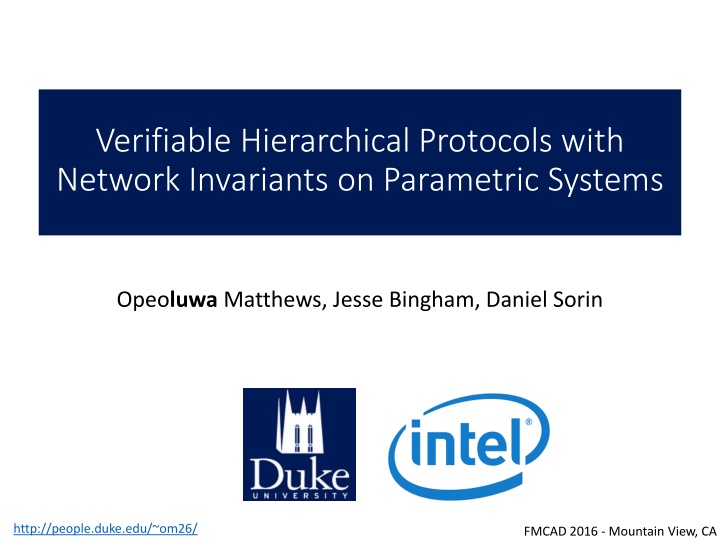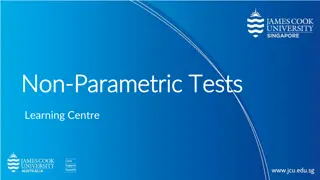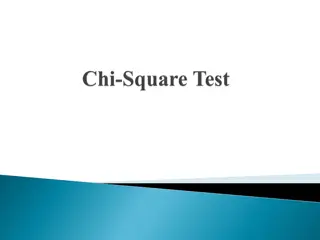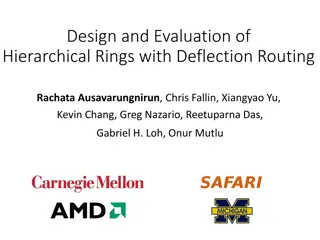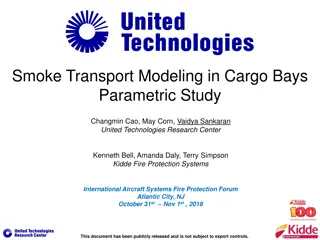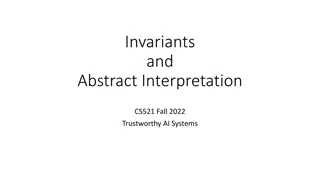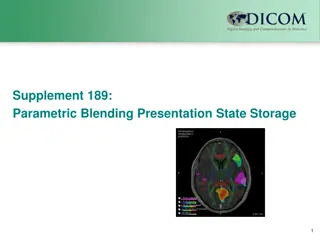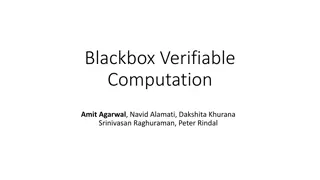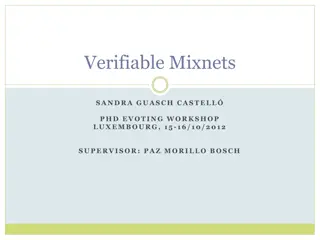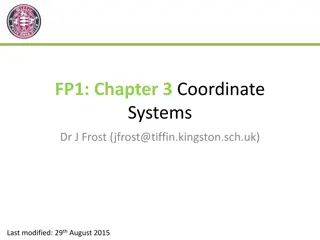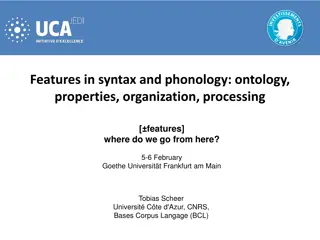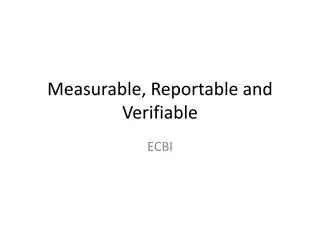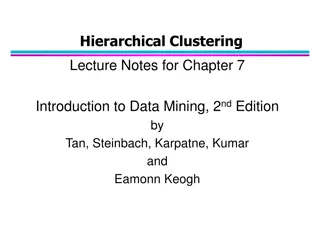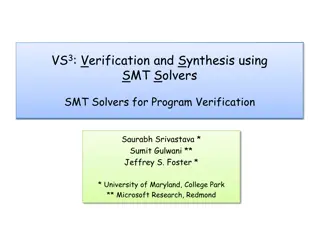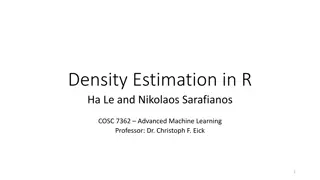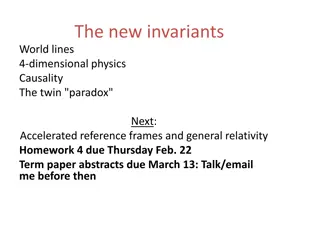Verifiable Hierarchical Protocols with Network Invariants on Parametric Systems
Explore the design and automated verification of hierarchical protocols for system models using network invariants. The approach involves formal specification, parameterized verification, and leveraging Neo framework for IO automata.
Download Presentation

Please find below an Image/Link to download the presentation.
The content on the website is provided AS IS for your information and personal use only. It may not be sold, licensed, or shared on other websites without obtaining consent from the author.If you encounter any issues during the download, it is possible that the publisher has removed the file from their server.
You are allowed to download the files provided on this website for personal or commercial use, subject to the condition that they are used lawfully. All files are the property of their respective owners.
The content on the website is provided AS IS for your information and personal use only. It may not be sold, licensed, or shared on other websites without obtaining consent from the author.
E N D
Presentation Transcript
Verifiable Hierarchical Protocols with Network Invariants on Parametric Systems Opeoluwa Matthews, Jesse Bingham, Daniel Sorin http://people.duke.edu/~om26/ FMCAD 2016 - Mountain View, CA
Problem Statement Goal: design and automated verification of hierarchical protocols R R - Root node I- Internal node L- Leaf node I I I L L L L I I L L L L L I I L L L Prop. logic formula on leaf states Safety property:
Problem Statement Parametric model checkers fall short Suitable for flat protocols Can t handle asymmetry in hierarchical protocols Solution: Design specifically to fit automated techniques Formally specify class of transition systems Neo Require properties that enable automated safety verification Key: Network invariants + parameterized verification
Illustration of our Approach R R - Root node I- Internal node L- Leaf node c3 Network Invariants L I L L c1 c2 requireL Network Invariant All proper subtrees P Behavior along c1 over-approximates c2, c3 Preorder captures states and externally-visible behaviorsof subhierarchy Parameterized model Checking L L I L L I I L
Neo Framework Neo formalized on I/O Automata (IOA) process theory Neo system is an IOA with specific properties for actions, composition, and executions 3 classes of IOA Internal node Leaf node Root node Define 3 sets of actions Upward actions U Downward actions D Peer-to-peer actions P
Internal Node n-child k-peer Internal NodeI is IOA that: Communicates with 1 parent, n children, k-1 peers, with index i u U, p P, d D (u, i) (p, i, 2)(p, i, k-2) (p, i, 0) (p, i, 1) I . . . output actions . . . (d, n-1) (d, 0)(d, 1)(d, 2) (d, i) (p, 2, i)(p, k-2, i) (p, 0, i)(p, 1, i) . . . I input actions . . . (u, n-1) (u, 0) (u, 1)(u, 2)
Leaf Node Leaf node L is 0-child, k-peer internal node: Communicates with 1 parent and k-1 peers, with index i u U, p P, d D (u, i) (p, i, 2)(p, i, k-2) (p, i, 0)(p, i, 1) output actions . . . L (d, i) (p, 2, i) (p, k-2, i) (p, 0, i)(p, 1, i) input actions L . . .
Root Node n-child Root Node R is IOA that: Communicates with n children R d D, u U . . . output actions (d, n-1) (d, 0) (d, 1)(d, 2) R . . . (u, n-1) input actions (u, 0) (u, 1)(u, 2)
Defining Neo Systems k-peer Leaf L is Open Neo System, communicates with k- 1 peers 2 k-2 1 0 . . . L
Defining Neo Systems k-2 2 1 0 . . . A k-peer internal node A k-peer Open Neo System
Defining Neo Systems A A is root node Closed Neo System
Network Invariants on Neo Systems Network Invariants captures behavior of subhierarchies (open Neo systems) Require: Every open Neo system must implement leaf wrt captures summaries of states and executions Summary states Summary functions Summary sequences of executions
Summarizing States Nodes Sum is set of summary states, with special element bad Have functions for every Neo system to capture summary state of each subhierarchy For leaf L, : For each n-child root or internal node A, : implies
Summarizing States Neo systems For Neo system define as
Neo Safety safe if safe if all reachable states are safe
Summarizing Executions Generate summary sequence of exec e of as follows: state action summarize states Remove silent terms that don t affect safety Delete all such that and
Neo Preorder Definition Need preorder for network invariants Given 2 open Neo systems , implies for all executions there exists execution such that
Theoretical Result Antecedents: 1. Every 1-level (all-leaf) open or closed neo system safe 2. Every 1-level (all-leaf) open neo system implements leaf If 1. and 2. can be performed in parametric model checker Implication: Reduced 2-dimensional verification problem to 1 dimension
Case Study We design and verify hierarchical coherence protocol NeoGerman Modify (originally flat) German protocol into Neo hierarchy Coherence defined on predicates {E,S,I} on cache states 2 private caches in (E, E) or (E, S) prohibited D Cn-1 C0 C2 C1
NeoGerman Protocol Root node is same as directory of German protocol is closed Neo system To get open Neo system , modify directory to be internal node (talk to parent) Internal node has state variable Permissions, captures summary of subhierarchy
NeoGerman Protocol Illustration Permissions=S D C2 Cn-1 C0 C1 I S S S
NeoGerman Protocol Illustration Permissions=S D C2 Cn-1 C0 C1 I S S S
NeoGerman Protocol Illustration Permissions=E D C2 Cn-1 C0 C1 I S S S
NeoGerman Protocol Illustration Permissions=E D C2 Cn-1 C0 C1 I S S S
NeoGerman Protocol Illustration Permissions=E D C2 Cn-1 C0 I C1 I I I
NeoGerman Protocol Illustration Permissions=E D C2 Cn-1 C0 E C1 I I I
NeoGerman Summary Functions Preorder, safety defined w.r.t summary functions Need: if safety violated function returns bad Create ordering < on Sum: I < S < E < bad 2 constraints on : if and 1) 2) Output of always returns value of Permissions
Verification Methodology All verification done automated in Cubicle parametric model checker SMT-based, backward reachability Similar syntax to Mur , guard/action semantics Clean, promising results, great support! Must prove antecedents of Theorem 1 1. and safe express in Cubicle 2. L (preorder) trickier
Preorder Proof Model both and L in same Cubicle program Force and L to transition in lockstep, starting with Have variables O_action and L_action, represent IOA action, updated after each transition, internal actions updated to (silent) One each transition, there needs to exist L step that matches step To reveal witness step, conjunct expression to L guards, forcing L take right step w.r.t step. Note: conjunction can only restrict L behavior
Preorder Proof After each step, Cubicle checks: There exists L action that can fire Cubicle safety prop: Disjunction of all L guards is true After each pair of and L steps, Cubicle checks: O_action=L_action, summary state outputs match
What Safety Properties can Neo Verify? Define class of FOL formulas we can verify are invariant Given set of predicates on leaf states and proposition logic formula over atoms of form We can verify all safety properties of the form: E.g., LP={E,S,I} We provide summary function guaranteed to verify all such safety properties
Future Work Industrial-strength hierarchical coherence protocol Request forwarding MESI coherence permissions Support for unordered networks Distributed lock management Richer permissions (NL, CR, CW, PR, PW, EX) Dynamic power management Natural hierarchy in datacenters
Conclusions Neo framework enables design and automated verification of hierarchical protocols safe for arbitrary configurations Case study: Design and verify hierarchical coherence protocol Correct for arbitrary size, depth, branching degrees per node Proof completely automated in parametric model checker Prove observational preorder in parametric setting http://people.duke.edu/~om26/ FMCAD 2016 - Mountain View, CA
